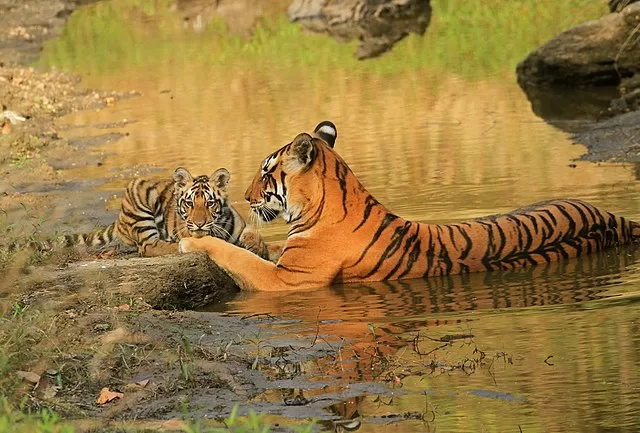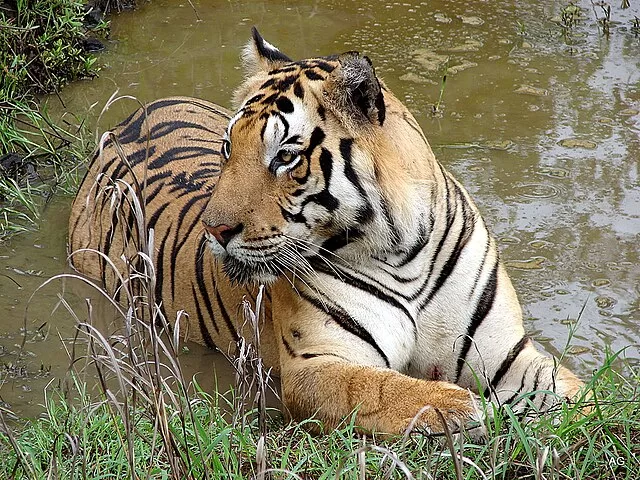Kanha National Park, located in the heart of India in the state of Madhya Pradesh, is a wildlife enthusiast’s paradise. It is one of the country’s premier tiger reserves and a haven for a diverse range of flora and fauna. With its breathtaking landscapes and incredible biodiversity, Kanha offers a memorable experience for every nature lover.
History and Background
The establishment of Kanha National Park dates back to 1955 when it was declared a wildlife sanctuary. Later, in 1974, it was designated as a tiger reserve under Project Tiger. The park encompasses an area of approximately 940 square kilometers, making it one of the largest national parks in India. It is nestled amidst the picturesque Maikal mountain range and the dense sal and bamboo forests.
Kanha is renowned for its significant population of Bengal Tigers and the rare and endangered Barasingha, also known as the Hard Ground Swamp Deer. Besides these iconic species, the park is home to a variety of mammals, including leopards, wild dogs, sloth bears, and Indian bison (gaur). The avian diversity here is equally impressive, with over 300 species of birds gracing the skies of Kanha.
Wildlife and Fauna
The Bengal Tiger, the majestic predator of the Indian jungles, thrives in Kanha’s diverse ecosystem. The park’s effective conservation efforts have led to a notable increase in the tiger population, making it a prime location for tiger sightings. Another unique feature of Kanha is the Barasingha, a deer species that is endemic to the region and faces the threat of extinction. The successful conservation of Barasinghas in Kanha has been a heartening conservation story.
Beyond the tigers and Barasinghas, Kanha is inhabited by various wildlife species, such as leopards, Indian bison, wild dogs, and hyenas. The park’s avifauna includes raptors, waterfowls, and migratory birds that add to the enchanting natural tapestry of the park.
Safari Experience
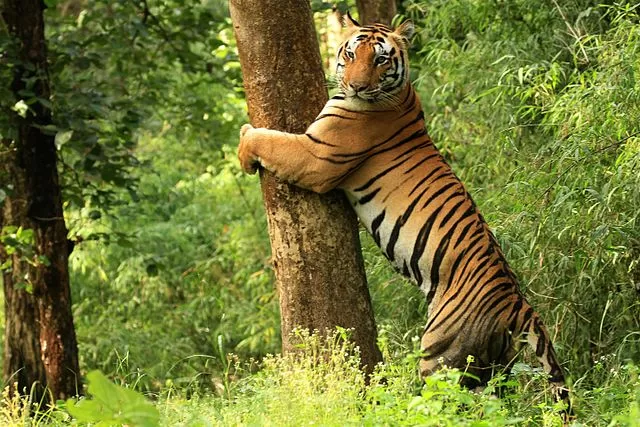
A visit to Kanha National Park is incomplete without experiencing a safari. The park offers different types of safaris, including jeep safaris and elephant safaris, providing visitors with various opportunities to explore the wilderness. The best time to visit for wildlife sightings is during the cooler months of October to March when animals venture out to water sources.
While exploring the park, visitors must adhere to the rules and regulations set by the forest authorities to ensure the safety of both wildlife and tourists. Maintaining a respectful distance from the animals and refraining from littering are crucial aspects of responsible ecotourism.
Ecotourism and Sustainability
Kanha National Park is a pioneer in sustainable ecotourism. The authorities and local communities work together to protect the park’s delicate ecosystem while also providing livelihood opportunities through responsible tourism. Eco-friendly initiatives like solar-powered accommodations and waste management systems showcase their dedication to preserving nature.
Conservation efforts in Kanha extend beyond the boundaries of the park, encompassing the welfare of surrounding communities. Engaging local residents in ecotourism initiatives not only benefits them economically but also fosters a sense of responsibility towards nature.
Famous Attractions in and around Kanha National Park
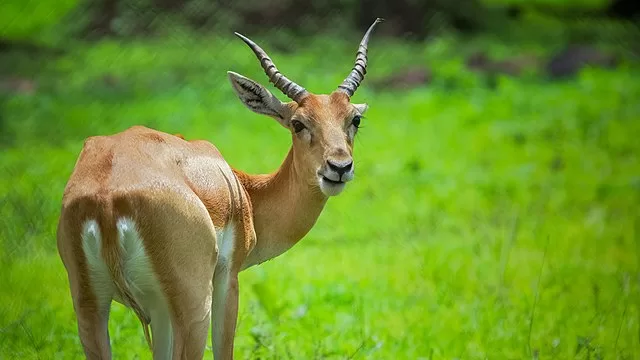
Apart from its abundant wildlife, Kanha offers several attractions that make the visit even more memorable. The Kanha Museum offers valuable insights into the park’s history, biodiversity, and conservation efforts. Bamni Dadar, also known as Sunset Point, presents a breathtaking view of the sunset against the park’s lush greenery.
Kanha Meadows and Forests are perfect for leisurely walks, birdwatching, and enjoying the serenity of nature. The ethereal beauty of these landscapes captures the essence of the wilderness.
Accommodation and Facilities
Kanha National Park provides accommodation options inside the park, allowing visitors to experience the untamed beauty of nature up close. Staying in these lodges adds an adventurous touch to the trip. Additionally, there are several resorts and hotels in the nearby areas, catering to varying budgets and preferences.
Tips for Visitors
Before embarking on a journey to Kanha, it is essential to be well-prepared. Carrying appropriate clothing, comfortable footwear, and necessary medications is crucial. Following the guidelines provided by the park authorities ensures a safe and enjoyable experience for everyone.
Kanha National Park – A Paradise for Nature Enthusiasts
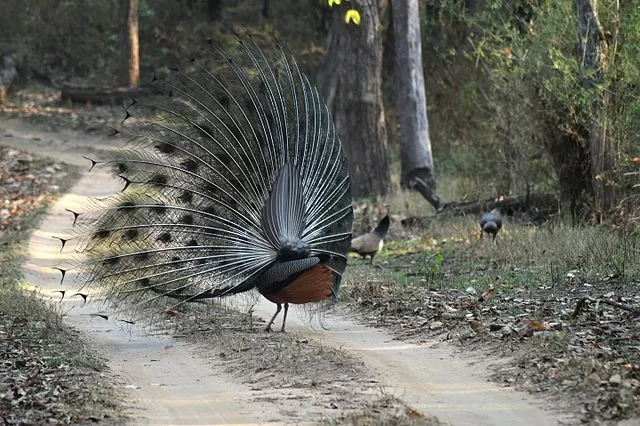
The mesmerizing beauty of Kanha National Park coupled with its rich biodiversity makes it an unparalleled destination for nature enthusiasts. The thrill of spotting a tiger in its natural habitat or witnessing the elegant Barasingha grazing in the meadows is an experience that lingers in one’s memory.
Conclusion
Kanha National Park stands as a testament to India’s dedication to wildlife conservation. Its success in preserving endangered species and providing an immersive wildlife experience is commendable. As visitors, it is our responsibility to cherish and protect this natural treasure for generations to come.
FAQs
1. What makes Kanha National Park special compared to other wildlife reserves?
Kanha is famous for its stunning landscapes and rich biodiversity. It’s one of India’s best tiger reserves, where the dense forests meet open meadows, creating a perfect blend of habitats. It’s also the inspiration behind Rudyard Kipling’s Jungle Book, which adds a magical touch to its appeal.
2. When is the best time to visit Kanha National Park for wildlife spotting?
The ideal time is from October to June. During these months, the weather is pleasant, and animals tend to gather near water sources, making it easier to spot tigers, leopards, deer, and more. The monsoon season (July to September) is off-limits as the park closes for regeneration.
3. What kinds of animals can I expect to see in Kanha?
Apart from the majestic Bengal tiger, Kanha is home to leopards, wild dogs (dholes), sloth bears, gaur (Indian bison), and several deer species like the barasingha, which is quite rare. Bird lovers will also be thrilled with the variety of resident and migratory birds.
4. Are safaris in Kanha safe for tourists?
Absolutely! Safaris are guided by trained forest officials who know the terrain and wildlife well. The park has strict rules to ensure safety and minimal disturbance to animals. Just follow the instructions, and you’re in for an unforgettable adventure.
5. How do I reach Kanha National Park and where should I stay?
Kanha is accessible by road from cities like Jabalpur and Nagpur, which also have nearby airports and railway stations. Inside and around the park, there are numerous eco-resorts, lodges, and government-run guest houses to suit different budgets and preferences.

